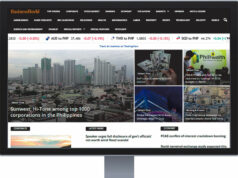Businesses operating in the transport and logistics industry are going through a period of disruptive change, one that not only presents complex challenges but also offers exciting possibilities.
A report titled “The future of the logistics industry” by the professional services firm PricewaterhouseCoopers explored several areas of disruption logistics companies should focus on. And one of those has to do with customer expectations.
“Customer expectations are increasing greatly. Both individuals and businesses expect to get goods faster, more flexibly, and — in the case of consumers — at low or no delivery cost,” the report said.
It added that there’s a trend toward a more customized manufacturing, which it described as good for customers but hard for the logistics industry. “Add it all up and the sector is under acute and growing pressure to deliver a better service at an ever-lower cost.”
Technology is also extensively impacting players in the industry, but it’s by making a “maximum” and “intelligent” use of technology that those players can provide cheap, better service, the report said.
“‘Digital fitness’ will be a prerequisite for success: the winners will be those who understand how to exploit a whole range of new technologies, from data analytics to automation and platform solutions,” the report said. “Those who don’t, risk obsolescence.”
Attaining so-called digital fitness is a challenge for the sector, which, the report noted, “is currently lagging many of its customers in this respect.” “Attracting the right skills is one issue, but developing the right strategy is even more crucial,” it said.
The entry of new firms has made the environment in which logistics companies operate more competitive. These firms, the report said, are taking advantage of digital technology or new “sharing” business models in order to carve out the more lucrative elements of the value chain. They also have the advantages of not having asset-heavy balance sheets and cumbersome existing systems that could weigh them down.
The new players are mostly start-ups in “asset light” parts of the value chain, the report said. One example is a virtual freight forwarder. “These asset-less or asset-light businesses exploit digital technology to offer interactive benchmarking of freight rates, or match shippers with available capacity,” the report said.
Even in last-mile delivery, the conveyance of a product from a distribution center to its final destination, like the house of the person who ordered it, many start-ups have emerged. “Some of these companies are using technology to tap into the ‘sharing economy’ by matching available capacity with delivery needs,” the report said.
The fourth area of disruption the report identified was about collaboration. “‘Sharing’ is a big story for logistics now – from Uber-style approaches to last-mile delivery, to more formal [joint ventures] and partnerships at corporate level, the whole sector is redefining collaboration,” it said, adding that much of that is being hampered by inconsistencies in, for instance, shipment sizes, processes and information technology systems.
On-demand urban delivery providers
A separate article by the management consulting firm McKinsey noted that a new set of competitors had entered the business-to-consumer delivery market — the on-demand urban delivery providers.
These firms offer a different form of service, the article said. “[T]hey integrate demand aggregation via their own mobile platforms with dedicated in-house operations to enable (almost) instant delivery.”
“These innovations in the go-to-market approach and logistics model have attracted almost $5 billion in venture capital since 2014 in Western markets alone with leading players on average raising more than 90% of their total funding in that period,” the article, which came out in 2017, said. “That’s shaking up the urban shopping and delivery landscape.”
The article estimated that more than two-thirds of urban delivery start-up action was in the category of prepared-food delivery. And the dominant players in that sphere were emerging.
“For the many runners-up, a new hunting ground is needed, but it will be hard to come by. Markets such as groceries or nonfood retail do not offer the same rare combination of high gross margins and high urgency as hot food does,” the article said.
“At average variable costs per delivery as high as $7 to $10 (roughly P364 to P520), profitability will remain out of reach for these start-ups in the broader market — unless they reinvent themselves and address the limitations of their instant delivery model,” it added.
This process, however, entails a shift from a pure point-to-point delivery to a more cost-efficient network-based consolidation and adoption of “old school” models of product warehousing and employment.
“For most new entrants, however, a shift of this magnitude would exceed their capabilities and budgets, and trying to make it happen would set them up for failure,” the article said.
Still, the article argued that the impact of start-ups on the expectations of urban consumers will be lasting. “[S]hoppers have grown fond of having the city at their fingertips,” it said.



